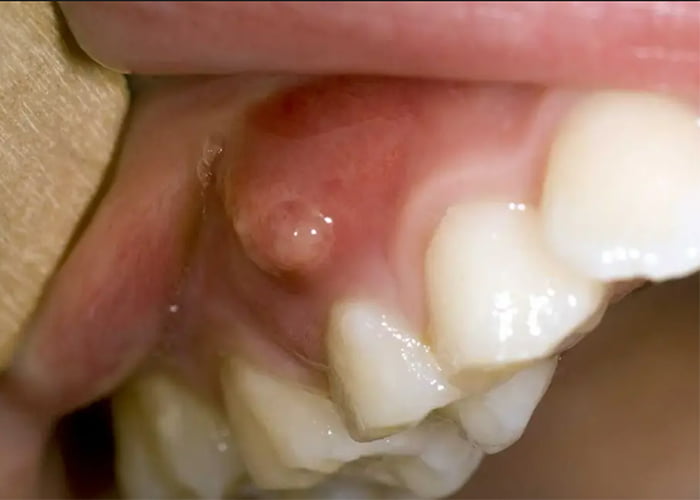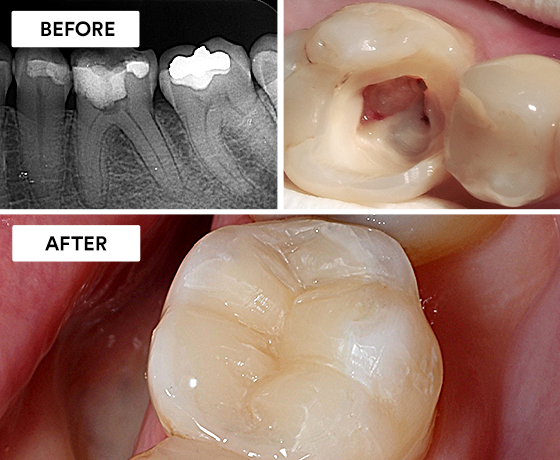Do they knock you out for root canal

Root canals are one of the most common dental procedures, designed to treat infected or severely decayed teeth. Despite their frequency and success rates, root canals often cause anxiety among patients, leading to questions about sedation and pain management. One of the most common concerns is whether patients are knocked out, or put under general anesthesia, for a root canal. This guide will explore the different sedation options available for root canals, what to expect during the procedure, and how to choose the best sedation method for your needs.
Understanding Root Canals
What is a Root Canal?
A root canal is a dental procedure aimed at saving a tooth that is infected or severely decayed. The process involves several steps:
- Diagnosis: Identifying the need for a root canal through symptoms and diagnostic tests.
- Removal of Infected Pulp: Cleaning out the infected or damaged pulp from the tooth’s root canals.
- Disinfection: Cleaning and disinfecting the inside of the tooth to remove bacteria and prevent further infection.
- Filling and Sealing: Filling the cleaned canals with a biocompatible material and sealing the tooth.
- Restoration: Often, a crown is placed over the tooth to restore its function and appearance.
Sedation Options for Root Canals
While general anesthesia, or being “knocked out,” is rarely used for root canals, there are several sedation options available to help manage anxiety and ensure comfort during the procedure:
1. Local Anesthesia
Description: Local anesthesia involves injecting a numbing agent directly into the area around the affected tooth. This is the most common form of anesthesia used in root canals.
Benefits:
- Effective Pain Control: Numbs the specific area being treated, preventing pain during the procedure.
- Quick Recovery: The effects wear off relatively quickly, allowing patients to resume normal activities soon after the procedure.
Considerations:
- Awake and Alert: Patients remain fully awake and alert during the procedure, which can cause anxiety for some.
2. Nitrous Oxide (Laughing Gas)
Description: Nitrous oxide, commonly known as laughing gas, is inhaled through a mask placed over the nose. It induces a state of relaxation and mild euphoria.
Benefits:
- Reduces Anxiety: Helps calm patients, making the procedure more tolerable.
- Quick Onset and Recovery: Takes effect quickly and wears off shortly after the procedure, allowing patients to drive themselves home.
Considerations:
- Mild Sedation: Provides light sedation and may not be sufficient for patients with severe dental anxiety.
3. Oral Sedation
Description: Oral sedation involves taking a sedative pill, such as diazepam or lorazepam, before the procedure. The medication induces a state of relaxation and drowsiness.
Benefits:
- Ease of Use: Simple to administer, as the sedative is taken orally.
- Deeper Relaxation: Provides a deeper level of sedation than nitrous oxide.
Considerations:
- Lingering Effects: Sedation can last for several hours, requiring someone to drive the patient home.
4. Intravenous (IV) Sedation
Description: IV sedation involves administering sedatives directly into the bloodstream through an IV line. It provides a deeper level of sedation, with patients often remaining conscious but very relaxed.
Benefits:
- Rapid Onset: Takes effect quickly and allows for precise control over the level of sedation.
- Deep Relaxation: Suitable for patients with moderate to severe dental anxiety.
Considerations:
- Requires Monitoring: Must be administered and monitored by a trained professional, typically an anesthesiologist or specially trained dentist.
- Recovery Time: Patients will need time to recover and will require someone to drive them home.
5. General Anesthesia
Description: General anesthesia induces a state of unconsciousness, ensuring the patient is completely asleep during the procedure. It is rarely used for root canals but may be considered for extremely anxious patients or complex cases.
Benefits:
- Complete Unconsciousness: Ensures the patient feels no pain or discomfort during the procedure.
Considerations:
- Higher Risk and Cost: General anesthesia carries higher risks and is more expensive than other forms of sedation.
- Extended Recovery Time: Patients will need a longer recovery period and someone to drive them home.
Choosing the Right Sedation Option
Selecting the appropriate sedation method for your root canal depends on several factors, including your level of anxiety, medical history, and the complexity of the procedure. Here are some tips to help you decide:
1. Assess Your Anxiety Level
- Mild Anxiety: Local anesthesia or nitrous oxide may be sufficient.
- Moderate Anxiety: Oral sedation or IV sedation might be more appropriate.
- Severe Anxiety: Discuss the possibility of general anesthesia with your dentist.
2. Consult Your Dentist
- Professional Advice: Your dentist can recommend the best sedation option based on your individual needs and the specifics of your case.
- Medical History: Provide your dentist with a complete medical history to ensure the chosen sedation method is safe for you.
3. Consider the Procedure Complexity
- Simple Root Canal: Local anesthesia or nitrous oxide may be enough.
- Complex Root Canal: Oral sedation, IV sedation, or in rare cases, general anesthesia, may be recommended.
What to Expect During a Root Canal with Sedation
Understanding what to expect during a root canal with sedation can help alleviate anxiety and ensure a smooth experience:
Before the Procedure
- Consultation: Discuss your sedation options with your dentist and make an informed decision.
- Preparation: Follow any pre-procedure instructions provided by your dentist, such as fasting if undergoing IV sedation or general anesthesia.
During the Procedure
- Sedation Administration: The chosen sedation method will be administered to help you relax.
- Local Anesthesia: Even with sedation, local anesthesia will be used to numb the area around the affected tooth.
- Procedure: The dentist will perform the root canal while you remain relaxed and comfortable.
After the Procedure
- Recovery: Depending on the sedation method, you may need some time to recover before leaving the dental office.
- Post-Procedure Care: Follow your dentist’s instructions for post-procedure care to ensure proper healing.
FAQs About Sedation for Root Canals
1. Do they knock you out for a root canal?
- General anesthesia, which knocks you out, is rarely used for root canals. Local anesthesia and various sedation options are typically sufficient.
2. Is sedation necessary for a root canal?
- Sedation is not always necessary but can be beneficial for patients with dental anxiety or undergoing complex procedures.
3. Can I drive home after a root canal with sedation?
- You can drive home after local anesthesia or nitrous oxide. If you receive oral sedation, IV sedation, or general anesthesia, you will need someone to drive you home.
4. How long does the sedation last?
- The duration of sedation varies: nitrous oxide wears off quickly, oral sedation can last a few hours, and IV sedation or general anesthesia may require longer recovery.
5. Is sedation safe for everyone?
- Sedation is generally safe but may not be suitable for patients with certain medical conditions. Consult your dentist and provide a full medical history.
6. Will I feel any pain during the root canal with sedation?
- Sedation helps manage anxiety and discomfort. Combined with local anesthesia, it ensures you feel no pain during the procedure.
7. How do I prepare for a root canal with sedation?
- Follow your dentist’s instructions, which may include fasting for a certain period before the procedure if you are receiving IV sedation or general anesthesia.
8. Can children receive sedation for a root canal?
- Yes, sedation options like nitrous oxide or oral sedation can be used for children to ensure they are comfortable during the procedure.
9. What are the risks of sedation for a root canal?
- Sedation is generally safe, but risks can include allergic reactions, breathing difficulties, or complications from pre-existing medical conditions. Discuss risks with your dentist.
10. How soon can I eat after a root canal with sedation?
- You can eat once the numbness from local anesthesia wears off, but start with soft foods and follow any specific dietary instructions from your dentist.
Case Studies: Sedation for Root Canals
Case Study 1: Nitrous Oxide for Mild Anxiety
Patient: A 30-year-old with mild dental anxiety required a root canal.
Solution: The dentist recommended nitrous oxide to help the patient relax.
Outcome: The patient experienced mild euphoria and relaxation, making the procedure more comfortable. Recovery was quick, and the patient was able to drive home.
Case Study 2: Oral Sedation for Moderate Anxiety
Patient: A 45-year-old with moderate dental anxiety needed a root canal.
Solution: The dentist prescribed oral sedation to be taken before the procedure.
Outcome: The patient felt deeply relaxed and drowsy, with minimal discomfort during the procedure. A friend drove the patient home, and recovery was smooth.
Case Study 3: IV Sedation for Severe Anxiety
Patient: A 55-year-old with severe dental anxiety and a complex root canal case.
Solution: The dentist recommended IV sedation for deeper relaxation.
Outcome: The patient remained conscious but very relaxed throughout the procedure. Recovery took a few hours, and a family member provided transportation home.
Conclusion
While general anesthesia is rarely used for root canals, various sedation options are available to help manage anxiety and ensure comfort. Local anesthesia, nitrous oxide, oral sedation, and IV sedation each offer different levels of relaxation and pain management. Consulting with your dentist and considering your anxiety level, medical history, and the complexity of the procedure will help you choose the best sedation method for your needs. With the right preparation and understanding of what to expect, you can undergo a root canal with minimal discomfort and anxiety, ensuring a smooth and successful outcome.









